The first time I visited a national wildlife refuge in Florida, I couldn’t see a thing. The power on Sanibel Island was out. I could only hear the ocean rolling in the licorice colored light.
A week later, I couldn’t see a thing when I visited a national wildlife refuge in Oregon for the first time. White fog as thick as marshmallow cream smothered the land. I could only hear cattle calling in the heavy mist.
Weather conditions weren’t the only striking difference. The comparison of public lands from one coast to another within a week’s time provides intriguing contrast.
J.N. Ding Darling National Wildlife Refuge
Florida’s Gulf Coast caters to the wild. On Sanibel Island, no building can be higher than a palm tree. You must slow down for swooping owls and it’s lights out for nesting turtles at night. Seventy percent of the region is protected in its natural state. The mangrove majesty of J.N. Ding Darling National Wildlife Refuge, at 6,400 acres, is included in that protection. Developing it, or changing it in anyway, is not up for debate.

“The community understands and respects the environment,” says Tamara Pigott, Lee County Visitor and Convention Bureau executive director. “They understand not only is it beautiful and creates a quality of life, but it also is an economic engine. They know taking care of it is part of their job. To live in a community that has that much respect for the environment, that’s really special.”
Randall Marsh is part of that community. He’s a fishing guide with more than two professional decades on the water. Tarpon are his preferred target, but I’m on his boat in January and it’s too cold for tarpon. Apparently it’s too cold for Marsh too. I’m barefoot and he looks bundled to plow snow instead pole flats. We compare fish stories of the salt and fresh variety recognizing we fish for both on public land.

“People want to see this,” Marsh says. “People want to come see a Florida that’s not high-rises and Disney World.”
Malheur National Wildlife Refuge
Malheur National Wildlife Refuge is far from Disney World, but there’s still plenty of action on its undeveloped acres. Especially right now. I arrive in Oregon on the heels of my Florida trip. The itch of coastal bug bites on my inland-bred shoulders flares as my camera pack settles on my back.
I orient myself in the fog by finding the watchtower at refuge headquarters. I’m trying to keep my fingers from freezing while also trying to get a grip on the drastic change in circumstance. Gone are the mangroves. No more sun and no more unquestioned devotion to public land.

Malheur NWR is 187,757 acres of undeveloped country set aside for wildlife. It’s a broad landscape of shallow sagebrush in the middle of cow country. It’s also in the middle of a standoff, which is why it’s closed now. A group calling themselves Citizens for Constitutional Freedom took over the refuge shortly after the ball dropped on New Year’s. They claim the government is overextending its reach by limiting ranchers and their grazing practices on public land. They cut federal fencing at the refuge and added a gate last week, saying the land belonged to a rancher that had been shut out.
“I know that common people have been kicked out of here,” says Duane Ehmer, standoff supporter on horseback with a frost-covered flag in his hand. “We’re standing up for our neighbors that ain’t got no voice in this community.”
I’m here because I’m an outdoor journalist. It’s my job to cover what’s going on outside and that doesn’t always mean fun topics like a warm fishing day in Florida. From covering stories about water wars and wildfires to fights over access and rights. I witness the failures, the struggles and the triumphs that unfold on public land.
Here’s the soundtrack for the struggle captured in this photo taken at Malheur National Wildlife Refuge headquarters:

“We're not terrorists. We're not boogeymen. We're American.”
Duane Ehmer, standoff supporter on horseback
“This is insane. This movement is absurd. This is un-American.”
Garrett Vene Klasen, New Mexico Wildlife Federation executive director
Not far from the compelling face-to-face showdown, I see wild pheasants flush and I hear coyotes call. Nature is going about its business regardless of who is sitting in the refuge watchtower.
There are more than 560 NWRs in the United States. Every state has at least one. I have seven in Idaho. Marsh has 29 in Florida, but really we all have access to every NWR regardless of where we live, what we do or how much money we make.
“A lot of people might not like the rules and regulations some of these places have, but that’s what makes these places so great,” Marsh says. “That’s what keeps people coming back year after year.”
Watching a heated exchange at refuge headquarters is almost as fascinating as watching brown trout hunt or grizzly bears swim. But given the choice, I choose browns and bears over a pissing match any day.
.




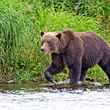


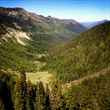



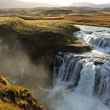


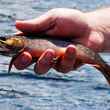
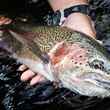




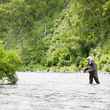



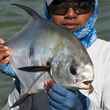
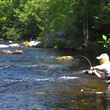





Comments